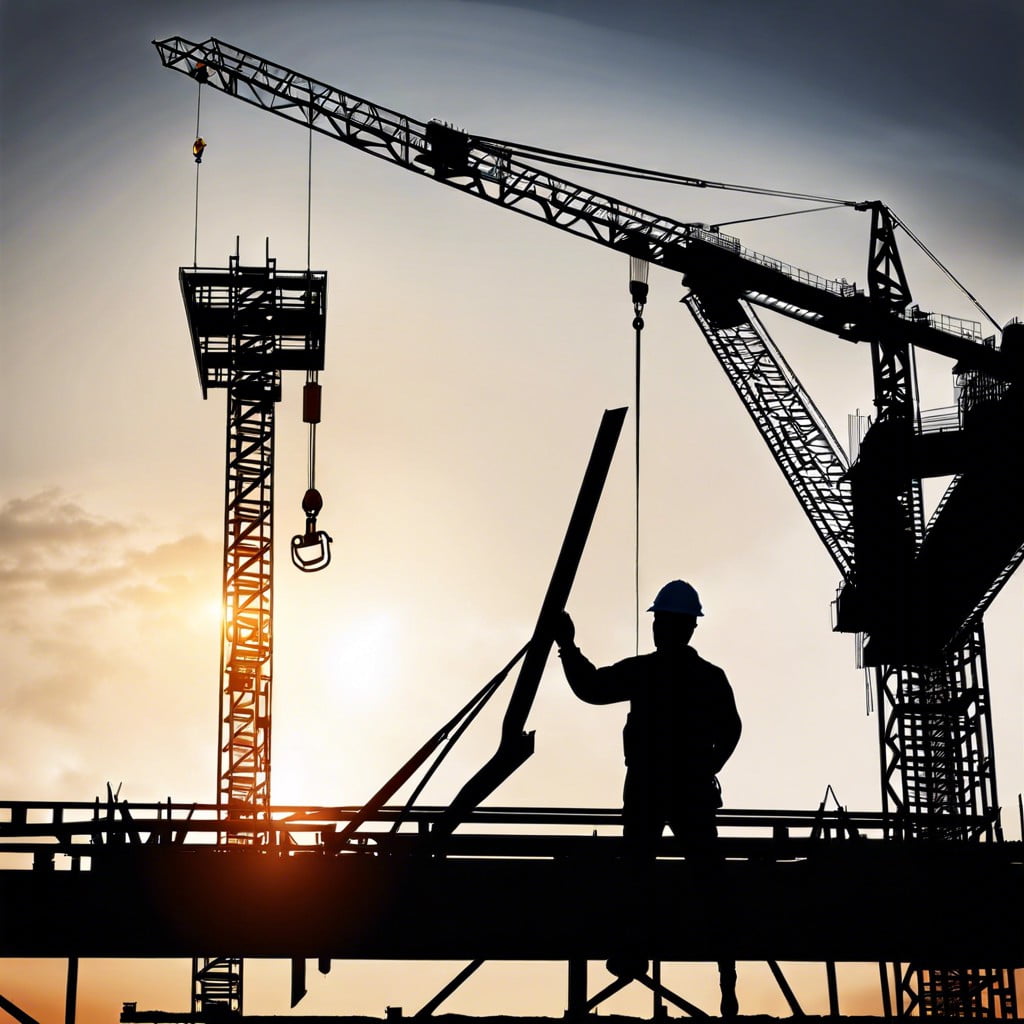Learn how to choose and collaborate with steel building erectors for your construction projects.
Key takeaways:
- Steel erectors play a critical role in construction projects.
- Steps to becoming a skilled steel erector.
- Meticulous preconstruction planning is essential.
- Safety measures are crucial during steel building erection.
- Cost analysis helps in accurate budget planning for metal building projects.
What Is a Steel Erector?

Steel erectors play a critical role in the construction industry, focusing primarily on the assembly and installation of steel frames for structures like buildings, bridges, and warehouses. Their job includes reading and interpreting blueprints, aligning steel components, and securing them with bolts or welds.
A key skill for a steel erector is precision, as they must ensure alignment and stability to uphold safety standards and structural integrity. The work is physically demanding and often performed at heights, requiring both physical stamina and a strong adherence to safety protocols.
Collaboration is also essential, as erectors work closely with engineers and other construction personnel to troubleshoot issues and adjust plans in real time. This cooperation ensures that the steel framework is correctly positioned and securely fastened, forming a solid base for the rest of the construction work.
Becoming A Steel Erector
To embark on a career as a steel erector, a blend of formal education and practical experience is often necessary. Most entrants hold a high school diploma or equivalent, followed by technical training in fields like welding or construction technology. Here are a few key steps to becoming skilled in this field:
**Educational Foundation**: Start with courses in mathematics, physics, and technical drawing. These subjects form the backbone of the understanding required in metal building construction.
**Technical Training**: Enrolling in a vocational school or community college can provide specialized training that covers blueprint reading, safety protocols, and metalworking skills.
**Certifications**: Gaining certifications like the Certified Welder (CW) from the American Welding Society can vastly improve employment prospects and credibility in the field.
**Hands-on Experience**: Practical experience is crucial. Apprenticeships or on-the-job training under experienced supervisors help budding erectors learn the ropes, from managing equipment to understanding structural concerns.
**Safety Training**: Since this role involves high risks, acquiring a thorough understanding of Occupational Safety and Health Administration (OSHA) guidelines and completing safety courses are indispensable to ensure personal and co-worker safety on the job.
By meticulously following these steps, one can effectively prepare for a successful career as a steel erector, contributing significantly to the construction of durable, efficient metal buildings.
Preconstruction Planning
Before breaking ground, meticulous planning is vital for the smooth execution of a steel building project. This phase involves several crucial steps:
Firstly, the design must be detailed and precise. Architects and engineers collaborate to create blueprints that meet both the functional requirements and building code specifications.
Next, obtaining the necessary permits cannot be overstated. Delay in permit approval can lead to significant project setbacks.
Choosing the right materials is also paramount. Quality steel ensures the durability and stability of the structure, while the choice of vendors can impact both budget and timeline.
Lastly, scheduling effectively coordinates all involved parties, from suppliers to subcontractors, aiming for a seamless construction phase. Adjustments to the timeline should be considered as weather and other external factors can influence construction progress.
By addressing these elements proactively, potential challenges can be minimized, paving the way for a successful construction project.
Safety Measures in Steel Building Erection
Erecting steel buildings carries inherent risks, making safety protocols crucial. First, all workers must undergo thorough training on equipment use and emergency procedures. Familiarity with the machinery and knowing how to act in a crisis can significantly reduce accident rates.
Proper gear is another must. Hard hats, safety glasses, and steel-toed boots protect against common injuries. For projects involving heights, harnesses and other fall protection equipment are non-negotiable.
A tidy construction site is a safer one. Regular removal of debris reduces tripping hazards and helps maintain clear access to emergency equipment and exits.
Lastly, routine inspections of both the structure as it progresses and the tools used are essential. Spotting potential problems before they escalate can keep everyone safe and keep the project on track. By prioritizing safety at every step, steel building erection can be executed more smoothly and without incident.
Cost Analysis for Metal Building Projects
Evaluating the financial aspects of metal building projects is critical. Costs can vary significantly based on factors including materials, labor, site-specific requirements, and the complexity of the structure. Three key components influence the cost:
- Material Costs: Steel prices fluctuate based on market conditions, so it’s wise to buy at optimal times. Aside from steel, consider other materials like insulation and finishing elements.
- Labor Costs: Skilled labor is essential for efficient and safe construction. Labor expenses may rise with the complexity of the project and the qualifications of the workers needed.
- Operational Costs: Don’t forget about the equipment, transportation of materials, and potential delays due to weather or logistical issues. Budgeting for contingencies is prudent.
Understanding these factors provides a clearer picture of the budget needed for a metal building, aiding in more accurate planning and avoidance of unexpected expenditures.
Related Reading:
- Steel Building Erectors Near Me: Your Essential Guide to Services
- Metal Building Contractors: Choosing the Right One for Your Project
- Steel Building Contractors Near Me – Find and Compare Local Services
- How Much Does It Cost to Build a 10,000 Sq Ft Commercial Building: Insights and Factors
- Fort Worth Commercial Remodeling Contractors | JFA Construction Services Guide